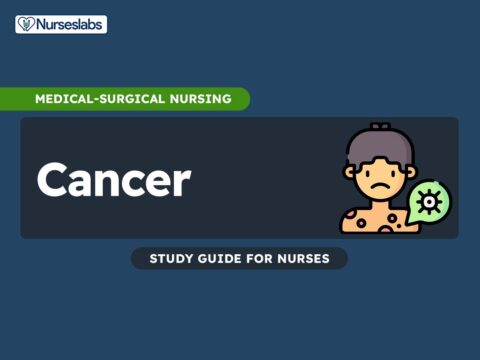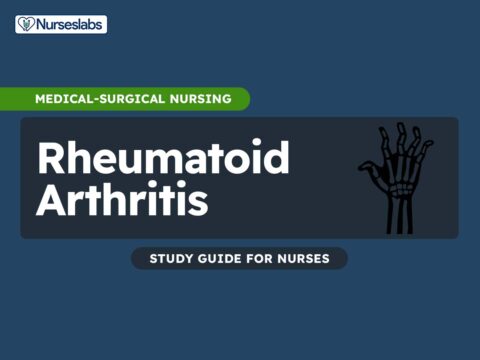Definition
The postoperative phase of the surgical experience extends from the time the client is transferred to the recovery room or postanesthesia care unit (PACU) to the moment he or she is transported back to the surgical unit, discharged from the hospital until the follow-up care.
Goals
During the postoperative period, reestablishing the patient’s physiologic balance, pain management and prevention of complications should be the focus of the nursing care. To do these it is crucial that the nurse perform careful assessment and immediate intervention in assisting the patient to optimal function quickly, safely and comfortably as possible.
- Maintaining adequate body system functions.
- Restoring body homeostasis.
- Pain and discomfort alleviation.
- Preventing postoperative complications.
- Promoting adequate discharge planning and health teaching.
The mnemonic “POSTOPERATIVE” may also be helpful:
- P – Preventing and/or relieving complications
- O – Optimal respiratory function
- S – Support: psychosocial well-being
- T – Tissue perfusion and cardiovascular status maintenance
- O – Observing and maintaining adequate fluid intake
- P – Promoting adequate nutrition and elimination
- A – Adequate fluid and electrolyte balance
- R – Renal function maintenance
- E – Encouraging activity and mobility within limits
- T – Thorough wound care for adequate wound healing
- I – Infection Control
- V – Vigilant to manifestations of anxiety and promoting ways of relieving it
- E – Eliminating environmental hazards and promoting client safety
To PACU
Patient Care during Immediate Postoperative Phase: Transferring the Patient to RR or PACU
Patient Assessment
Special consideration to the patient’s incision site, vascular status and exposure should be implemented by the nurse when transferring the patient from the operating room to the postanethesia care unit (PACU) or postanesthesia recovery room (PARR). Every time the patient is moved, the nurse should first consider the location of the surgical incision to prevent further strain on the sutures. If the patient comes out of the operating room with drainage tubes, position should be adjusted in order to prevent obstruction on the drains.
- Assess air exchange status and note patient’s skin color
- Verify patient identity. The nurse must also know the type of operative procedure performed and the name of the surgeon responsible for the operation.
- Neurologic status assessment. Level of consciousness (LOC) assessment and Glasgow Coma Scale (GCS) are helpful in determining the neurologic status of the patient.
- Cardiovascular status assessment. This is done by determining the patient’s vital signs in the immediate postoperative period and skin temperature.
- Operative site examination. Dressings should be checked.
Positioning
Moving a patient from one position to another may result to serious arterial hypotension. This occurs when a patient is moved from a lithotomy to a horizontal position, from a lateral to a supine position, prone to supine position and even when a patient is transferred to the stretcher. Hence, it is very important that patients are moved slowly and carefully during the immediate postoperative phase.
Promoting Patient Safety
When transferred to the stretcher, the patient should be covered with blankets and secured with straps above the knees and elbows. These straps anchor the blankets at the same time restrain the patient should he or she pass through a stage of excitement while recovering from anesthesia. To protect the patient from falls, side rails should be raised.
Safety checks when transferring the patient from OR to RR:
- S – Securing restraints for I.V. fluids and blood transfusion.
- A – Assist the patient to a position appropriate for him on her based on the location of incision site and presence of drainage tubes.
- F – Fall precaution implementation by making sure the side rails are raised and restraints are secured well.
- E – Eliminating possible sources of injuries and accidents when moving the patient from the OR to RR or PACU.
Postoperative Nursing Care
Airway
- Keep airway in place until the patient is fully awake and tries to eject it. The airway is allowed to remain in place while the client is unconscious to keep the passage open and prevents the tongue from falling back. When the tongue falls back, airway passage obstruction will result. Return of pharyngeal reflex, noted when the patient regains consciousness, may cause the patient to gag and vomit when the airway is not removed when the patient is awake.
- Suction secretions as needed.
Breathing
- B – Bilateral lung auscultation frequently.
- R – Rest and place the patient in a lateral position with the neck extended, if not contraindicated, and the arm supported with a pillow. This position promotes chest expansion and facilitates breathing and ventilation.
- E – Encourage the patient to take deep breaths. This aerates the lung fully and prevents hypostatic pneumonia.
- A – Assess and periodically evaluate the patient’s orientation to name or command. Cerebral function alteration is highly suggestive of impaired oxygen delivery.
- T – Turn the patient every 1 to 2 hours to facilitate breathing and ventilation.
- H – Humidified oxygen administration. During exhalation, heat and moisture are normally lost, thus oxygen humidification is necessary. Aside from that, secretion removal is facilitated when kept moist through the moisture of the inhaled air. Also, dehydrated patients have irritated respiratory passages thus, it is very important make sure that the inhaled oxygen is humidified.
Circulation
- Obtain patient’s vital signs as ordered and report any abnormalities.
- Monitor intake and output closely.
- Recognize early symptoms of shock or hemorrhage such as cold extremities, decreased urine output – less than 30 ml/hr, slow capillary refill – greater than 3 seconds, dropping blood pressure, narrowing pulse pressure, tachycardia – increased heart rate.
Thermoregulation
- Hourly temperature assessment to detect hypothermia or hyperthermia.
- Report temperature abnormalities to the physician.
- Monitor the patient for postanethesia shivering or PAS. This is noted in hypothermic patients, about 30 to 45 minutes after admission to the PACU. PAS represents a heat-gain mechanism and relates to regaining the thermal balance.
- Provide a therapeutic environment with proper temperature and humidity. Warm blankets should be provided when the patient is cold.
Fluid Volume
- Assess and evaluate patient’s skin color and turgor, mental status and body temperature.
- Monitor and recognize evidence of fluid and electrolyte imbalances such as nausea and vomiting and body weakness.
- Monitor intake and output closely.
- Recognize signs of fluid imbalances. HYPOVOLEMIA: decreased blood pressure, decreased urine output, increased pulse rate, increased respiration rate, and decreased central venous pressure (CVP). HYPERVOLEMIA: increased blood pressure and CVP, changes in lung sounds such as presence of crackles in the base of both lungs and changes in heart sounds such as the presence of S3 gallop.
Safety
- Avoid nerve damage and muscle strain by properly supporting and padding pressure areas.
- Frequent dressing examination for possible constriction.
- Raise the side rails to prevent the patient from falling.
- Protect the extremity where IV fluids are inserted to prevent possible needle dislodge.
- Make sure that bed wheels are locked.
GI Function and Nutrition
- If in place, maintain nasogastric tube and monitor patency and drainage.
- Provide symptomatic therapy, including antiemetic medications for nausea and vomiting.
- Administer phenothiazine medications as prescribed for severe, persistent hiccups.
- Assist patient to return to normal dietary intake gradually at a pace set by patient (liquids first, then soft foods, such as gelatin, junket, custard, milk, and creamed soups, are added gradually, then solid food).
- Remember that paralytic ileus and intestinal obstruction are potential postoperative complications that occur more fre-quently in patients undergoing intestinal or abdominal surgery.
- Arrange for patient to consult with the dietitian to plan appealing, high-protein meals that provide sufficient fiber, calories, and vitamins. Nutritional supplements, such as Ensure or Sustacal, may be recommended.
- Instruct patient to take multivitamins, iron, and vitamin C supplements postoperatively if prescribed
Comfort
- Observe and assess behavioral and physiologic manifestations of pain.
- Administer medications for pain and document its efficacy.
- Assist the patient to a comfortable position.
Drainage
- Presence of drainage, need to connect tubes to a specific drainage system, presence and condition of dressings
Skin Integrity
- Record the amount and type of wound drainage.
- Regularly inspect dressings and reinforce them if necessary.
- Proper wound care as needed.
- Perform hand washing before and after contact with the patient.
- Turn the patient to sides every 1 to 2 hours.
- Maintain the patient’s good body alignment.
Assessing and Managing Voluntary Voiding
- Assess for bladder distention and urge to void on patient’s arrival in the unit and frequently thereafter (patient should void within 8 hours of surgery).
- Obtain order for catheterization before the end of the 8-hour time limit if patient has an urge to void and cannot, or if the bladder is distended and no urge is felt or patient cannot void.
- Initiate methods to encourage the patient to void (eg, letting water run, applying heat to perineum).
- Warm the bedpan to reduce discomfort and automatic tightening of muscles and urethral sphincter.
- Assist patient who complains of not being able to use the bedpan to use a commode or stand or sit to void (males), unless contraindicated.
- Take safeguards to prevent the patient from falling or fainting due to loss of coordination from medications or orthostatic hypotension.
- Note the amount of urine voided (report less than 30 mL/h) and palpate the suprapubic area for distention or tenderness, or use a portable ultrasound device to assess residual volume.
- Continue intermittent catheterization every 4 to 6 hours until patient can void spontaneously and postvoid residual is less than 100 mL.
Encouraging Activity
- Encourage most surgical patients to ambulate as soon as possible.
- Remind patient of the importance of early mobility in preventing complications (helps overcome fears).
- Anticipate and avoid orthostatic hypotension (postural hypotension: 20-mm Hg fall in systolic blood pressure or 10-mm Hg fall in diastolic blood pressure, weakness, dizziness, and fainting)
- Assess patient’s feelings of dizziness and his or her blood pressure first in the supine position, after patient sits up, again after patient stands, and 2 to 3 minutes later.
- Assist patient to change position gradually. If patient becomes dizzy, return to supine position and delay getting out of bed for several hours.
- When patient gets out of bed, remain at patient’s side to give physical support and encouragement.
- Take care not to tire patient.
- Initiate and encourage patient to perform bed exercises to improve circulation (range of motion to arms, hands and fin-gers, feet, and legs; leg flexion and leg lifting; abdominal and gluteal contraction).
- Encourage frequent position changes early in the postoperative period to stimulate circulation. Avoid positions that compromise venous return (raising the knee gatch or placing a pillow under the knees, sitting for long periods, and dangling the legs with pressure at the back of the knees).
- Apply antiembolism stockings, and assist patient in early ambulation. Check postoperative activity orders before get-ting patient out of bed. Then have patient sit on the edge of bed for a few minutes initially; advance to ambulation as tolerated
Gerontologic Considerations
Elderly patients continue to be at increased risk for postoperative complications. Age-related physiologic changes in respi-ratory, cardiovascular, and renal function and the increased incidence of comorbid conditions demand skilled assessment to detect early signs of deterioration. Anesthetics and opioids can cause confusion in the older adult, and altered pharmacokinetics results in delayed excretion and prolonged respiratory depressive effects. Careful monitoring of electrolyte, hemoglo-bin, and hematocrit levels and urine output is essential because the older adult is less able to correct and compensate for fluid and electrolyte imbalances. Elderly patients may need frequent reminders and demonstrations to participate in care effectively.
- Maintain physical activity while patient is confused. Physi-cal deterioration can worsen delirium and place patient at increased risk for other complications.
- Avoid restraints, because they can also worsen confusion. If possible, family or staff member is asked to sit with patient instead.
- Administer haloperidol (Haldol) or lorazepam (Ativan) as ordered during episodes of acute confusion; discontinue these medications as soon as possible to avoid side effects.
- Assist the older postoperative patient in early and progressive ambulation to prevent the development of problems such as pneumonia, altered bowel function, DVT, weakness, and functional decline; avoid sitting positions that promote venous stasis in the lower extremities.
- Provide assistance to keep patient from bumping into objects and falling. A physical therapy referral may be indicated to promote safe, regular exercise for the older adult.
- Provide easy access to call bell and commode; prompt void-ing to prevent urinary incontinence.
- Provide extensive discharge planning to coordinate both professional and family care providers; the nurse, social worker, or nurse case manager may institute the plan for continuing care.
Evaluation
Patients in PACU are evaluated to determine the client’s discharge from the unit. The following are the expected outcomes in PACU:
- Patient breathing easily.
- Clear lung sounds on auscultation.
- Stable vital signs.
- Stable body temperature with minimal chills or shivering.
- No signs of fluid volume imbalance as evidenced by an equal intake and output.
- Tolerable or minimized pain, as reported by the patient.
- Intact wound edges without drainage.
- Raised side rails.
- Appropriate patient position.
- Maintained quiet and therapeutic environment.
To Surgical Unit
Patient Care during Immediate Postoperative Phase: Transferring the Patient from RR to the Surgical Unit
To determine the patient’s readiness for discharge from the PACU or RR certain criteria must be met. The parameters used for discharge from RR are the following:
- Uncompromised cardiopulmonary status
- Stable vital signs
- Adequate urine output – at least 30 ml/ hour
- Orientation to time, date and place
- Satisfactory response to commands
- Minimal pain
- Absence or controlled nausea and vomiting
- Pulse oximetry readings of adequate oxygen saturation
- Satisfactory response to commands
- Movement of extremities after regional anesthesia
Most hospitals use a scoring system to assess the general condition of patient in RR or PACU. Observation and evaluation of the patient’s physical signs is based on a set of objective criteria.
The evaluation guide used is a modification of the APGAR scoring system used for newborns. Through this, a more objective assessment of the patient’s physical condition is guaranteed while recovering the RR or PACU.
The perfect possible score in this modified APGAR scoring system is 10. To be discharge from RR or PACU the patient is required to have at least 7 to 8 points.
Patients with score less than 7 must remain in RR or PACU until their condition improves. Areas of assessment in PACU or RR evaluation guide are:
- Respiration – ability to breathe deeply and cough.
- Circulation – systolic arterial pressure >80% of preanesthetic level
- Consciousness Level – verbally responds to questions or oriented to location
- Color – normal skin color and appearance: pinkish skin and mucus
- Muscle activity – moves spontaneously or on command





































Leave a Comment